Business costs are a core concept in business administration and financial accounting. Among the types of business costs, each item will have a different nature and purpose, closely linked to the economic benefits of the business. Understanding the types of business costs is essential if managers want to aim for sustainable development and optimize resources.
In this article, Bizzi will answer questions related to business expenses and provide the most effective management solutions.
What are the types of business expenses?
Business expenses are all the money that a business has to spend in the process of production, business and management to maintain operations and generate revenue. Business expenses are not only money spent, but also include the loss of value of assets such as depreciation of fixed assets, or payables arising in the process of operating the business.
According to international accounting standards (IAS), Expenses are the reduction of economic benefits in the accounting period in the form of: cash flow or other assets are reduced or liabilities are increased, leading to a decrease in equity, excluding distributions to owners.
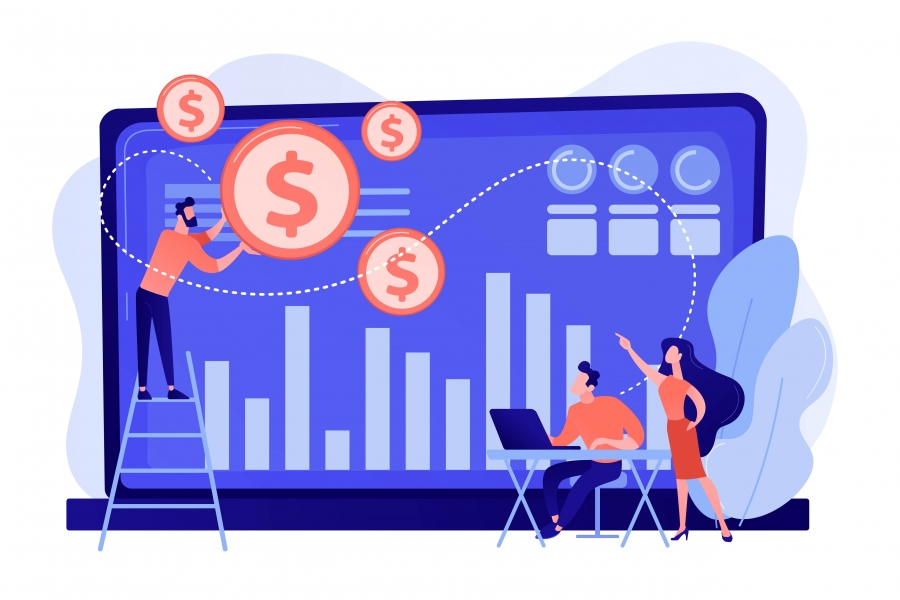
Types of business expenses include:
- Operating costs: selling costs, business management costs.
- Production costs: raw materials, labor, depreciation.
- Financial costs: interest costs, exchange rate differences costs.
- Tax expenses: corporate income tax, indirect taxes are not deductible.
General characteristics of costs:
- Necessity: Businesses cannot avoid costs if they want to stay in business.
- Diverse classification: Costs can be classified in many ways (by function, by behavior, by relationship to products, etc.).
- Variation by business activity: There are fixed costs (which do not vary with output) and variable costs (which vary with production scale).
- Direct impact on profits: If costs increase without corresponding increase in revenue, profits will decrease.
The importance of managing business expenses
Determining the types of business management costs accurately plays an extremely important role in business management, because it directly affects operational efficiency, business strategy and profitability. The core role of business costs:
- Basis for pricing products/services: Know the actual cost of the product, thereby setting a reasonable selling price, ensuring profit. Avoid selling below cost, causing losses, or pricing too high, causing loss of competitiveness.
- Control and cut costs: Detect waste and loss during operations. Make decisions to optimize resources and cut unnecessary costs, increase efficiency, reduce costs, and improve profits.
- Support business decision making: Make decisions to invest, expand, or cut products/projects, compare costs and benefits between different options.
- Financial forecasting and planning: Analyzing past business costs helps forecast future costs, which is the basis for building budgets, business plans, and long-term strategic orientation.
- Profit calculation and efficiency measurement: If business costs are not properly identified, profits will be distorted, leading to incorrect assessment of business efficiency.
- Legal compliance and financial transparency: Record financial statements, limit legal risks and financial irregularities.
Classify detailed business management costs
Classifying business costs helps manage and control them more effectively, thereby serving the purposes of accounting, planning and making management decisions. Depending on the purpose of use, costs can be classified in many different ways.
- Classification by cost factor (economic nature)
Used to summarize production and business costs during the period according to each constituent element.
| Cost factor | Explain |
| Direct material cost | Main raw materials that make up the product. |
| Direct labor costs | Salary, allowances, insurance for production workers. |
| Fixed asset depreciation costs | Depreciation of fixed assets used in production (machinery, factories). |
| Outsourcing service costs | Rent transportation, electricity, water, maintenance, etc. |
| Other cash expenses | Business expenses, reception, document costs, etc. |
- Classification of business costs in business activities by function
Reflection costs incurred by each functional department in business:
| Cost Type | Explain |
| Production cost | Directly serve product production and create cost. |
| Cost of sales | Marketing costs, advertising, commissions, shipping, sales staff. |
| Business management costs | General operating costs, administrative salaries, stationery, meetings, etc. |
| Financial costs | Bank interest, discount costs, exchange rate differences, etc. |
| Corporate income tax expense | Corporate income tax payable. |
- Classification by cost behavior (relationship to output)
Helps managers analyze the cost impact of changing production scale:
| Cost Type | Explain |
| Fixed costs | Does not vary with output (rent, management salaries, standard depreciation). |
| The variable costs | Increase/decrease according to output (raw materials, direct labor, packaging, etc.). |
| Mixed costs | Including both fixed and variable parts (electricity and water production, maintenance by volume). |
- Classification by controllability
Serves to evaluate the effectiveness of management levels:
| Cost Type | Explain |
| Controllable costs | The manager has the right to decide or adjust (salaries, purchasing supplies). |
| Uncontrollable costs | Cannot be directly controlled due to external factors (electricity prices, taxes, exchange rates). |
- Classification by purpose of use in management decision making
Used in cost-benefit analysis and strategy formulation:
| Cost Type | Explain |
| Direct costs | Directly linked to costing objects (materials, labor by product). |
| Indirect costs | Allocation to multiple products/departments (depreciation, supervisory salaries). |
| Opportunity cost | The benefit lost when choosing one option over another. |
| Sunk cost | Once occurred and cannot be changed, it should not affect current decisions. |
| Cost difference | Arising from choosing one option over another. |
| Testing costs | Used in sensitivity analysis and financial performance (e.g. warranty costs). |
- Classification by time of recording
| Cost Type | Explain |
| Prepaid expenses | Incurred in advance but spread over multiple periods (prepaid rent, insurance). |
| Prepaid expenses | Recorded before actual occurrence (interest, unpaid wages). |
| Actual costs incurred | Record when expenses have occurred (enter invoices, payment vouchers, etc.). |
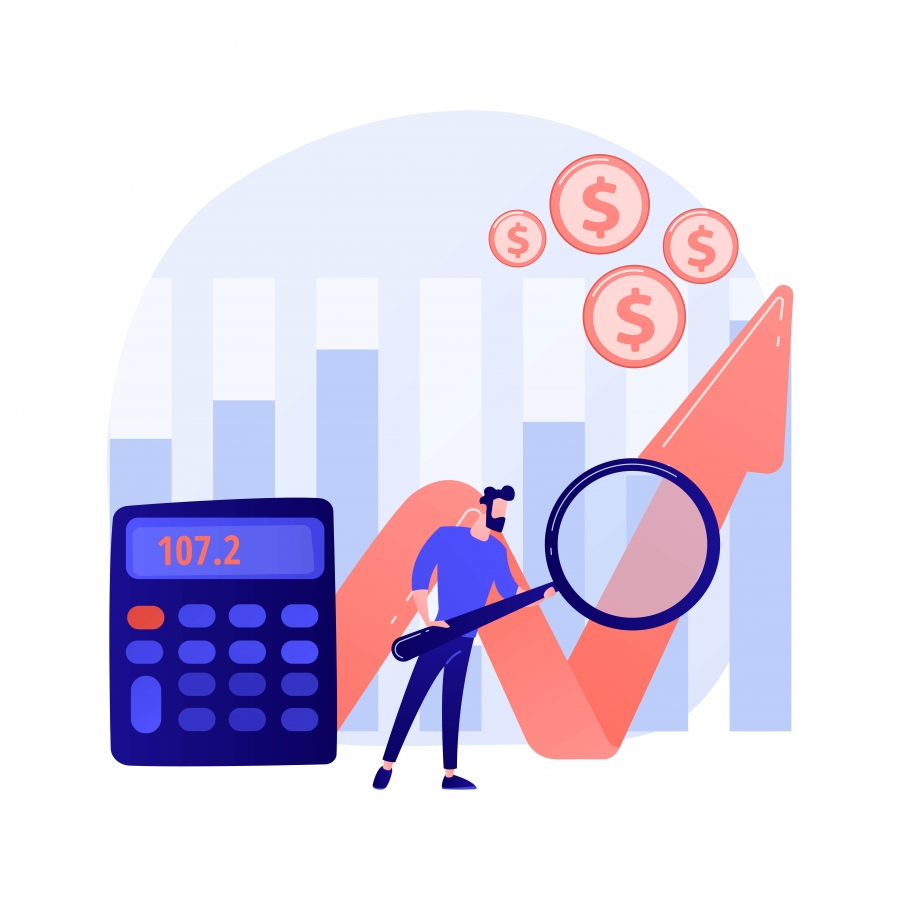
Concepts related to types of business costs
Below is a summary of concepts related to types of business management costs, helping you better understand how to analyze, control and make effective financial management decisions. These concepts are often used in financial accounting, management accounting and business management.
| Concept | Explain |
| Cost/Expense | The total cost that a business must spend to achieve its business goals: production, service provision, sales, management, etc. |
| Production Cost | Includes all costs associated with the production of a product or service, such as:
|
| Cost of Goods Manufactured (COGM) | Total cost to produce one unit of finished product.
Basis for pricing, calculating profits and making production decisions. |
| Direct Cost | Costs directly linked to specific objects such as products, services, projects.
For example: raw materials to produce product A. |
| Indirect Cost | Costs that cannot be allocated directly to a specific product must be allocated proportionally. For example: factory foreman salary, depreciation of shared machinery. |
| Fixed Cost | Does not vary with output or short term. For example: factory rent, fixed asset depreciation, management salary. |
| Variable Cost | Increase/decrease according to the level of production and business activities.
For example: raw materials, packaging costs, production electricity. |
| Mixed Cost | Includes both fixed and variable parts.
For example: electricity and water bills (including fixed charges and usage-based charges). |
| Opportunity Cost | The value of the benefit lost when choosing one option over another. Very important in making business decisions, investing, and allocating resources. |
| Sunk Cost | Costs that have been incurred in the past and cannot be recovered. Should not affect current decisions because they cannot be changed. |
| Differential Cost | The difference in cost between two or more business alternatives. Used to compare the optimal choice in strategy. |
| Standard Cost | The estimated or standard cost to produce one unit of product.
Basis for comparison with actual costs and variance analysis. |
| Controllable Cost | Costs that a manager can control or influence within his or her authority. The opposite is uncontrollable cost. |
| Pre-determined Cost | Costs are established before a production or service activity is performed. |
| Cost of Goods Sold (COGS) | The portion of the cost of products or services sold during the period. Important in calculating gross profit. |
Common Misconceptions About Business Costs
Here are some common mistakes that many people make about business expenses. These mistakes can lead to inaccurate financial reporting, poor cash flow management, or poor decision making.
- Confusing Costs and Expenditures
– Expense: is the loss recorded in the income statement, reducing profit for the period.
– Expenditure: is the actual cash flow spent, which can be used for expenses, buying assets, paying debts, etc.
For example: Buying a printer worth 50 million. This is an expense, but it is not recorded as a total cost immediately, but will be gradually allocated (depreciation).
- Thinking that fixed costs are constant
Many people mistakenly believe that fixed costs do not change in any case. In fact, fixed costs are only stable within a certain capacity range. When expanding the scale, fixed costs can also increase in steps (e.g. renting more warehouses, adding more machines).
- Confusing Sunk Costs and Current Costs
Sunk costs are costs that have already been incurred and cannot be recovered, and should not affect current decisions. However, many people still let the mentality of “regretting the money spent” influence their decisions, leading to continued investment in loss-making projects.
For example: Spent 200 million on app design, but found it was not feasible - still tried to continue to "recover capital".
- All expenses are tax deductible
In fact, not all expenses are deductible when calculating corporate income tax. Invalid expenses (lacking invoices, not in accordance with regulations) will be excluded. Accountants need to ensure that the documents are valid, reasonable and legal.
- Confusion between direct costs and indirect costs
Many small businesses do not separate these two types of costs, leading to incorrect cost calculations, affecting pricing and profits.
- Ignore opportunity costs when making decisions
Some investment or business decisions do not take into account opportunity costs – the benefits foregone if an alternative option is chosen. Failure to consider opportunity costs can lead to a business misjudging its true performance.
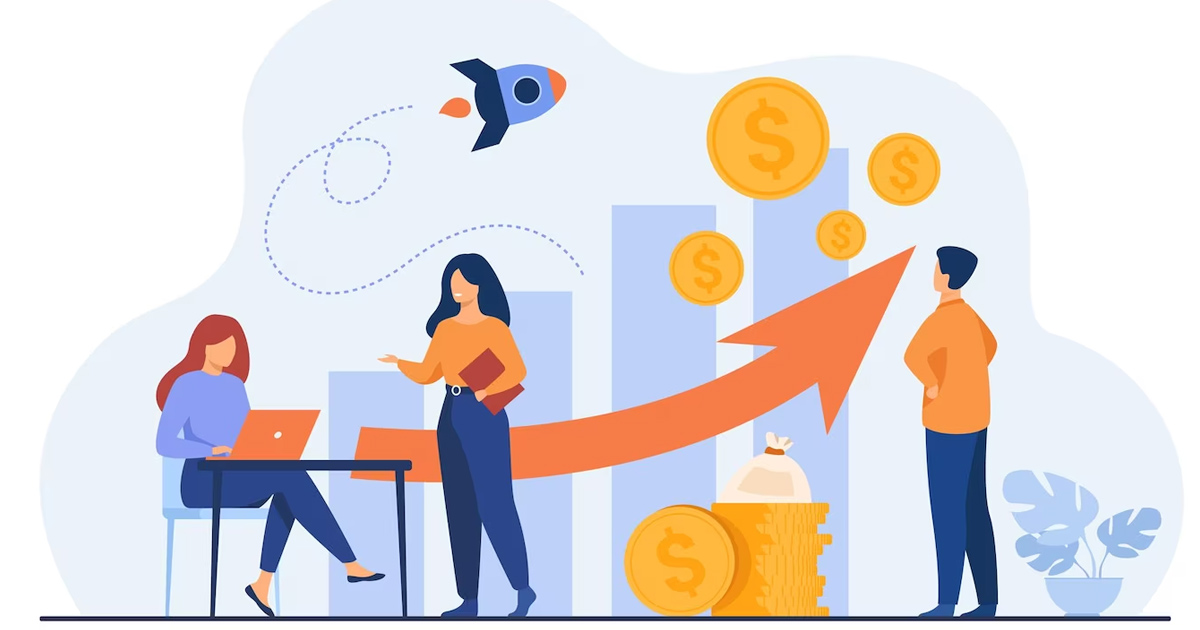
- Think the more cost cutting the better
Cutting back in the wrong places (like marketing, training, R&D) can kill growth potential. Effective cost management is optimal, not “extreme frugality”.
- Confusion between cost and value of purchased inventory.
Record the entire value of raw materials in inventory as expenses.
- Receive new invoice to record expenses.
The timing of expense recognition is based on the matching principle.
Methods to control and optimize business management costs
Determining methods to control and optimize business management costs is extremely important, because it directly affects business efficiency, profits and sustainable development of the business. Below are some methods that businesses can consider applying to maintain business expenses at reasonable levels:
Set up detailed and transparent budgets:
- Determine budgets by department, project, and campaign.
- Periodically update actual budget against planned budget.
- Use financial management software for easy tracking.
Analyze regular business expenses:
- Statistics on fixed costs (rent, salaries) and variable costs (advertising, supplies).
- Periodically review unnecessary or non-value-added expenses.
- Analyze cost-to-sales ratio to evaluate performance.
Compare and negotiate with suppliers:
- Always survey many suppliers to choose the best price - guaranteed quality.
- Negotiate payment terms, discounts and warranty policies.
- Long term cooperation for better price.
Optimizing human resources:
- Check the performance of each part to make appropriate adjustments.
- Take advantage of freelancers or part-timers if you don't need permanent staff.
- Internal training for multi-talented personnel, reducing outsourcing costs.
Application of technology and automation:
- Use accounting, warehouse management, and CRM software to reduce manual labor.
- Automate operations, sales, and customer care processes.
- Digital transformation helps reduce business management costs and increase accuracy.
Efficient inventory management:
- Apply periodic inventory method to avoid excess inventory.
- Use an alert system when inventory reaches optimal levels.
- Minimize defective, expired, and long-term inventory products.
Measuring the effectiveness of marketing campaigns:
- Set clear KPIs for each campaign.
- Analyze ROI to invest in effective channels (TikTok Ads, Facebook, SEO...).
- Limit uncontrolled advertising costs or following inappropriate trends.
Control recurring costs:
- Review monthly software and service subscriptions to avoid waste.
- Consider replacing it with a free or cheaper solution if possible.
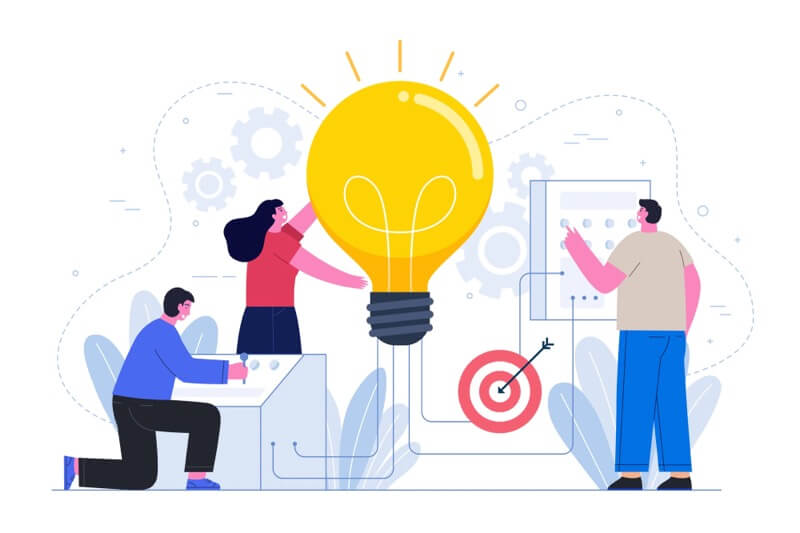
How to effectively manage business expenses at each stage of development
Effective cost management is not a fixed formula, but changes flexibly according to each stage of business development. In each stage, the business will have different scale, characteristics and management needs.
Here are some ways to manage different types of business management costs:
For new businesses
- Define platform governance strategy.
- Generate revenue early to offset costs.
- Make a detailed business plan.
For businesses in the development stage
- Continue to practice saving.
- Prioritize spending on R&D, technology, and human resources.
- Buy insurance to prevent risks.
- Provision for reserve funds.
- Cut indirect costs (sales, marketing, operations).
For businesses in difficulty
- Cut out unnecessary complexity.
- Apply the Pareto principle.
- Drastically cut operating costs.
- Sell off assets to save money.
- Cut down on salary and financial costs.
- Business restructuring.
Conclude
Understanding and managing business costs plays a core role in achieving success and sustainable development, as it directly affects the profitability, competitiveness, and long-term strategy of the business. Cost management software is increasingly being widely adopted by businesses to improve operational efficiency through process automation and effective budget management.
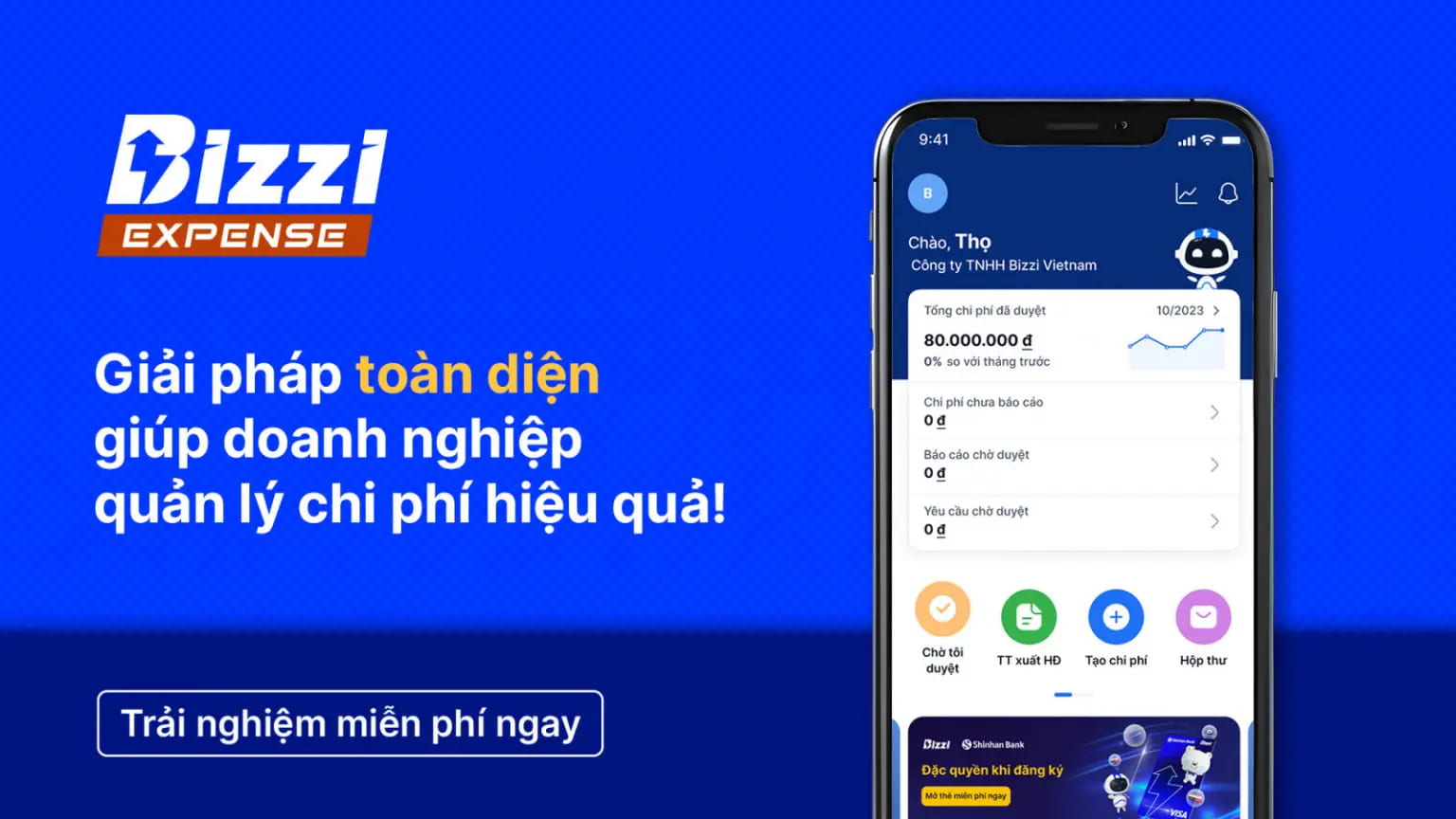
Bizzi Expense is one of the leading software solutions for managing business expenses, trusted by large enterprises such as Masan Group, Mondelez International, Pierre Fabre,... thanks to its superior automation power and integration capabilities.
Bizzi not only supports cost management, but also helps optimize resources and increase efficiency through breakthrough features such as automatic navigation of approval flows by unit, regulations, and established authorizations; real-time cost analysis and financial reporting; data scanning and invoice validity checking, etc.
With a user-friendly interface design, Bizzi Expense ensures optimal compatibility with banking systems and modern accounting software, helping businesses not only minimize manual work but also speed up financial processing and decision making. This is an ideal solution for businesses that want to improve control over all types of business management costs, modernize processes and aim for sustainable development and long-term competitiveness.
Outstanding features of Bizzi Expense:
- Send work/advance requests quickly
- Simplify the process of collecting invoices – creating expenses
- Approve documents conveniently and transparently
- Control costs strictly according to policies and budget
Sign up for a trial now to experience Bizzi Expense and modernize your business's expense management process: https://bizzi.vn/dang-ky-dung-thu/


